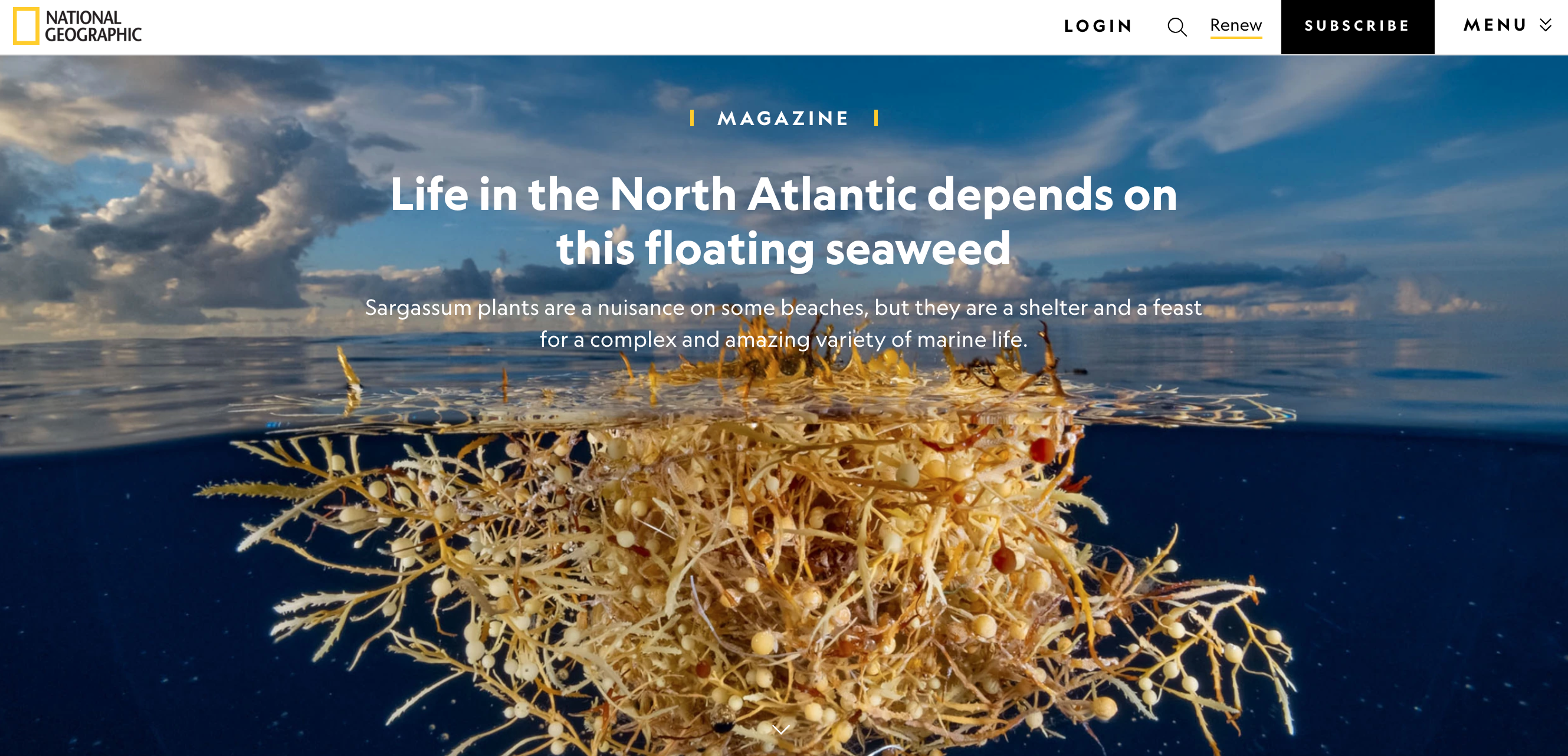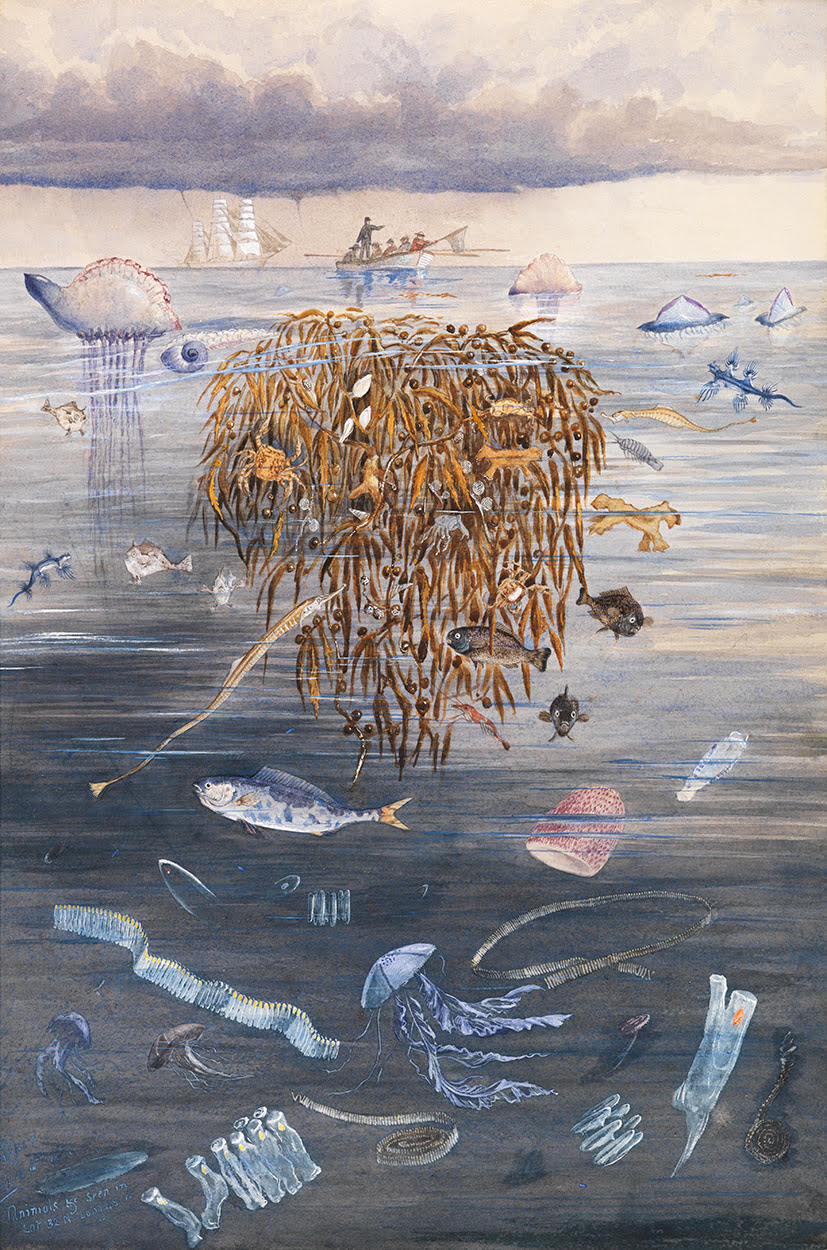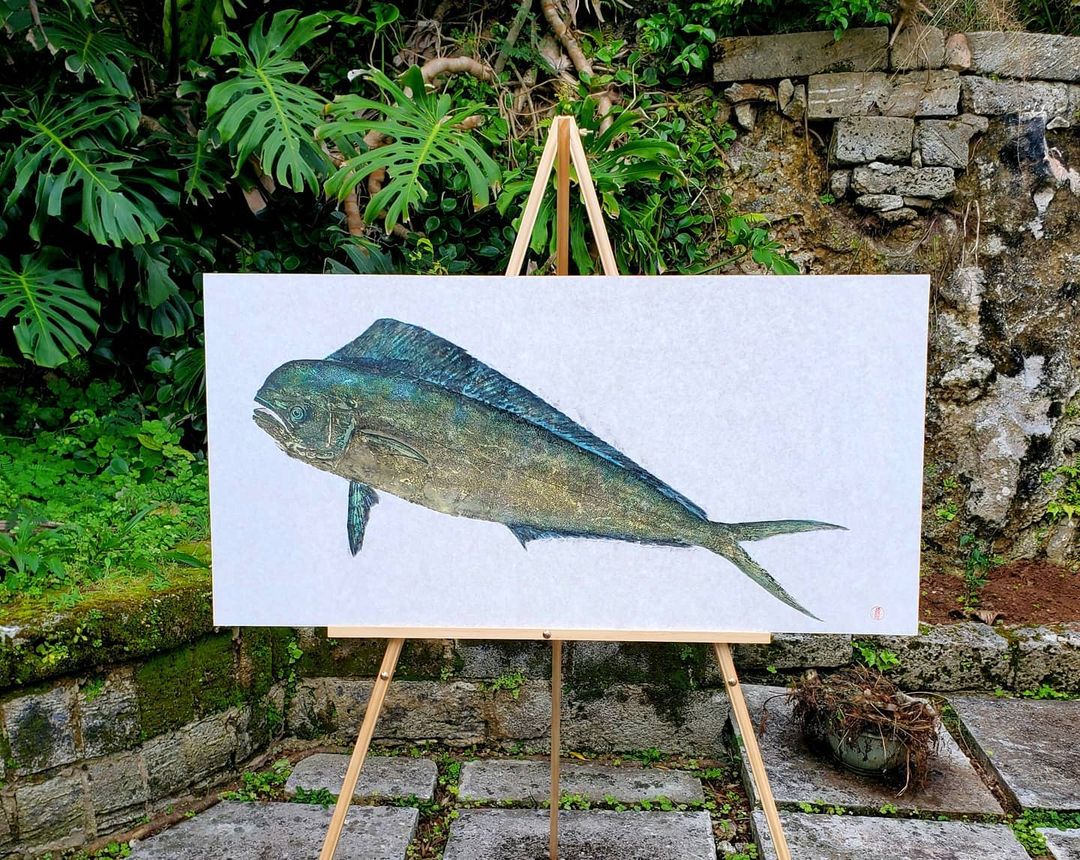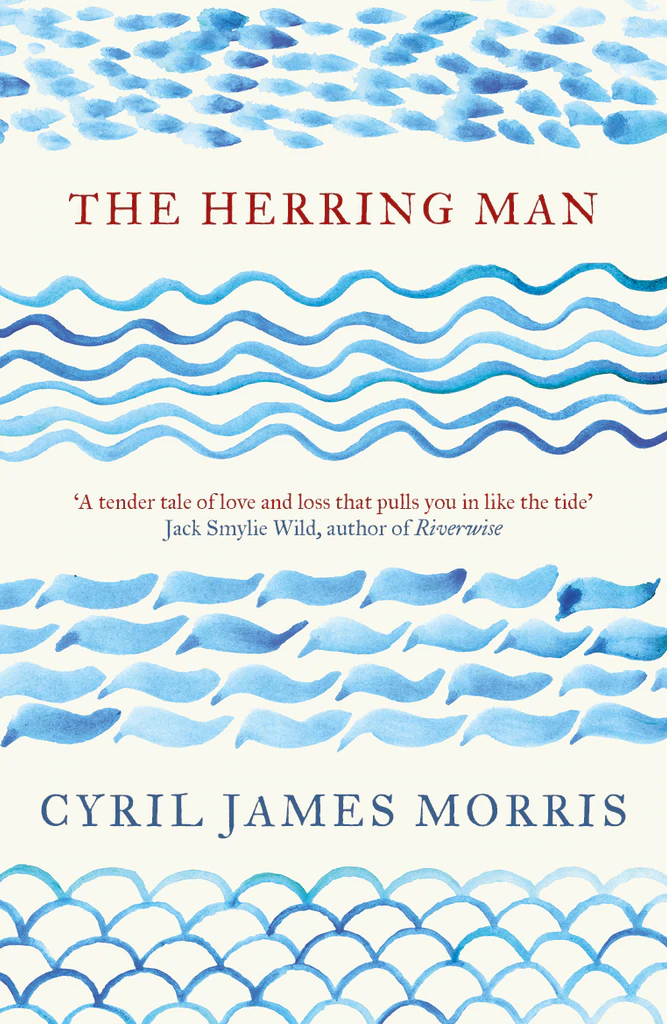The Sargasso Sea has captivated the popular imagination for many years. Since the 1400s, sailors feared being dragged to the bottom of the ocean after entaglement in seaweed, and its association with the Bermuda Triangle has given it an air of mystery. The Sargasso Sea also has incredible ecological value - supporting several iconic species, such as whales and pelagic fish, as well as highly-adapted and strange-looking sargassum endemic animals, like the sargassum frogfish. There have been many creative responses to this intreaguing area of the ocean, including by some Sargasso Sea Ambassadors - including art, writing, illustration, music, and photography.
The Sargasso Sea Scrolls
Marti Ittner and Jenny Freestone, board members of Pyramid Atlantic, originally had the idea to create these beautiful pieces of art. They approached artists from around the world to submit drawings of some of the marine species that live in, or make use of the Sargasso Sea. Under the direction of Gretchen Schermerhorn, Artistic Director at Pyramid Atlantic, photographic images of the sargassum weed were digitally printed in gold on each panel. The artists' drawings were converted to digital images, and screenprinted onto the panels. The scrolls comprise a set of 3 panels of Okawara paper, each 2'6′ wide by 8′ high. They were exhibited at the Bermuda Underwater Exploration Institute in 2012.
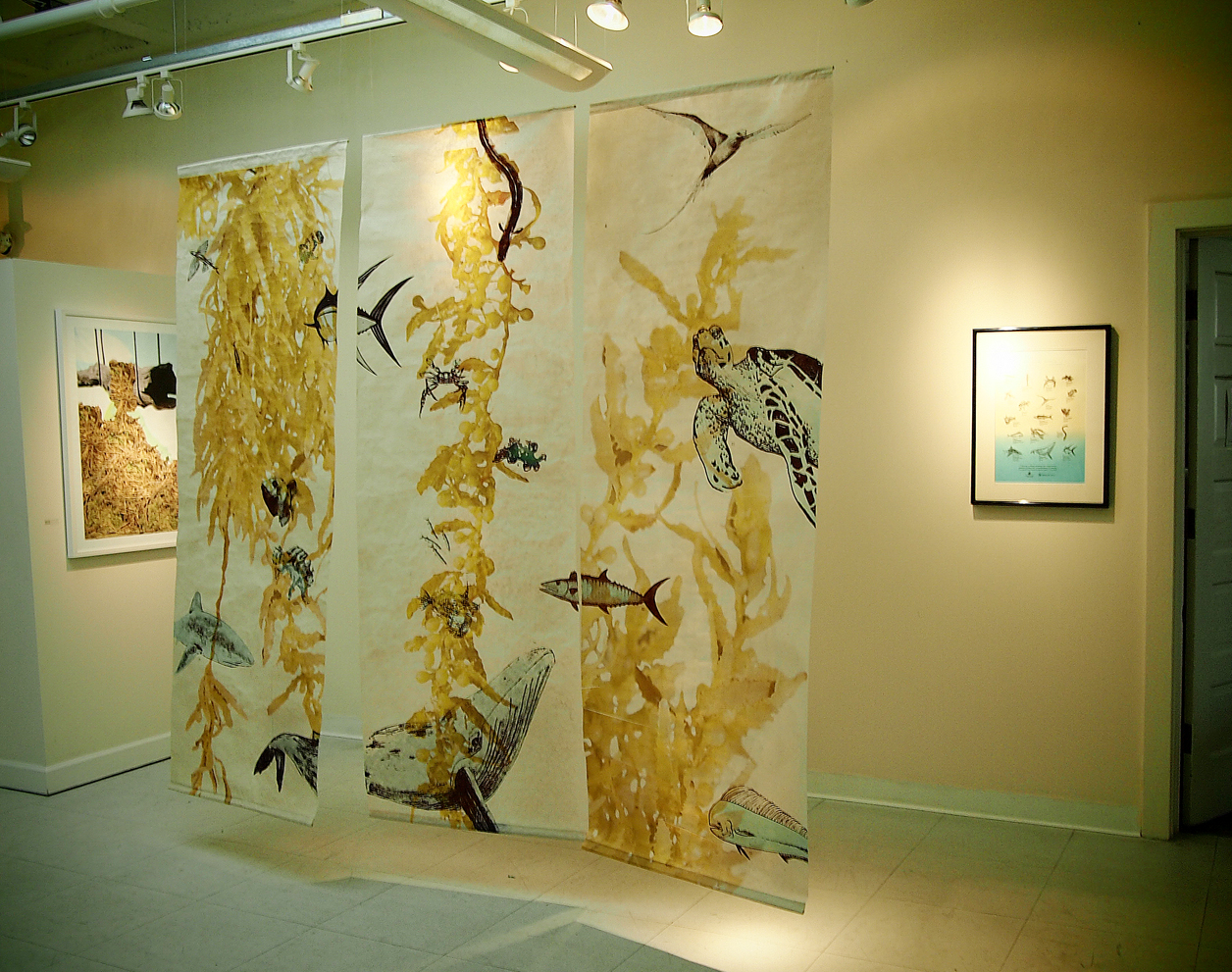 Photo credit: Pyramid Atlantic
Photo credit: Pyramid Atlantic
The Sargasso Sea Scrolls also formed the backdrop for the signing of the Hamilton Declaration, which established the Commission in 2014.
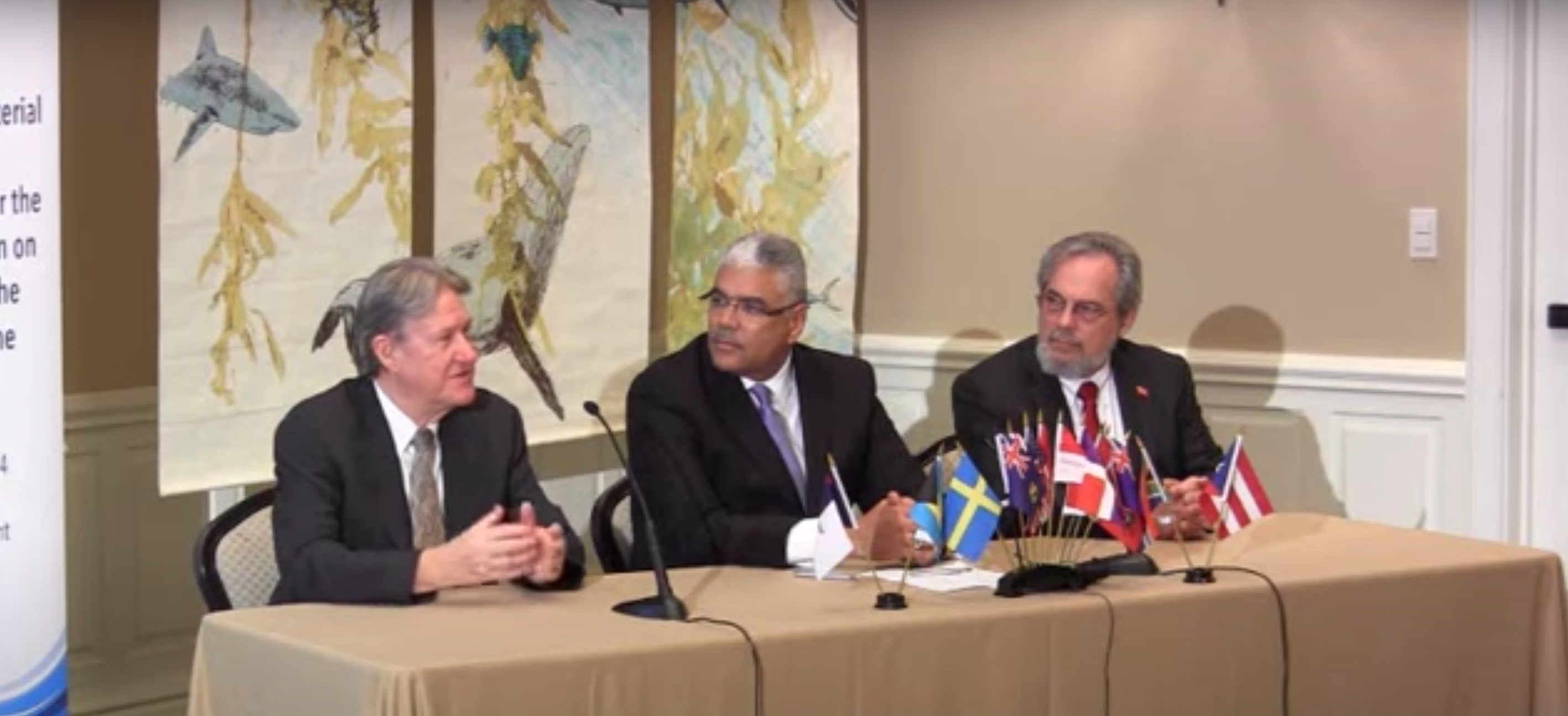
Sherman's Lagoon
Created by Sargasso Sea Ambassador Jim Toomey, Sherman's Lagoon is a daily comic strip that appears in 250 newspapers in North America. It is centered around the adventures of an overweight great white shark called Sherman, and his other undersea friends. The conservation message in Toomey's comic strip earned him the Environmental Hero Award in 2000, presented by NOAA "for using art and humor to conserve and protect our marine heritage" He was given the award again in 2010.
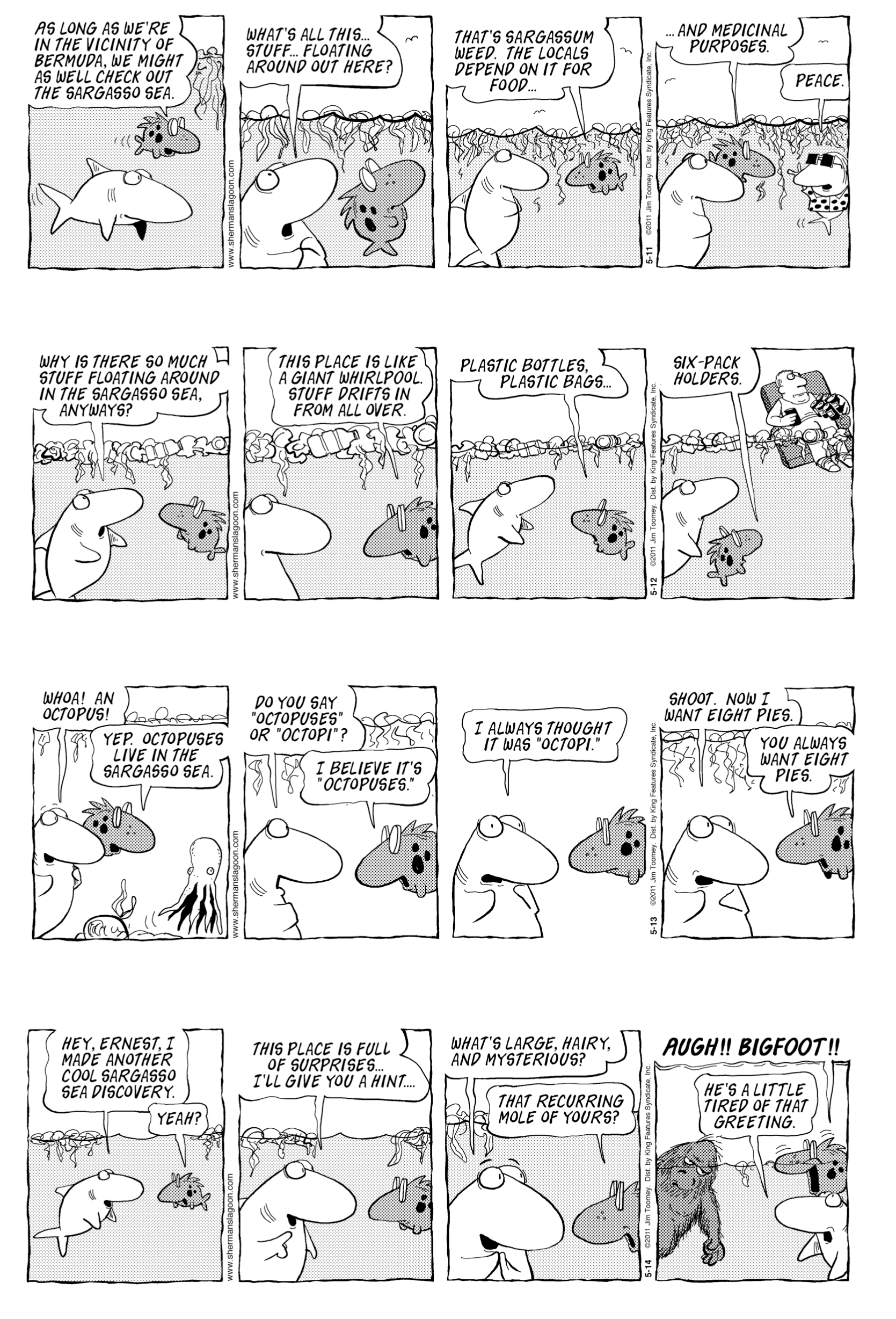 Sherman's Lagoon by Jim Toomey
Sherman's Lagoon by Jim Toomey
James Prosek
James Prosek is another Sargasso Sea Ambassador, and he has produced both art and writing about the Sargasso Sea. His book Eels: An Exploration, from New Zealand to the Sargasso, of the World's Most Amazing and Mysterious Fish, published in September 2010 was a New York Times Book Review editor's choice, and is the subject of a documentary for PBS series "Nature" that aired in 2013. This book is an exploration of the biology and cultural significance of anguillid eels, which form part of the Sargasso Sea Commission's work programme under our 'migratory species' priority area. He is also an artist, and has exhibited his work in several high-profile galleries. His portraits of oceanic fishes seek to promote conservation by emphasing fish as individuals, rather than thinking of one fish as its species.
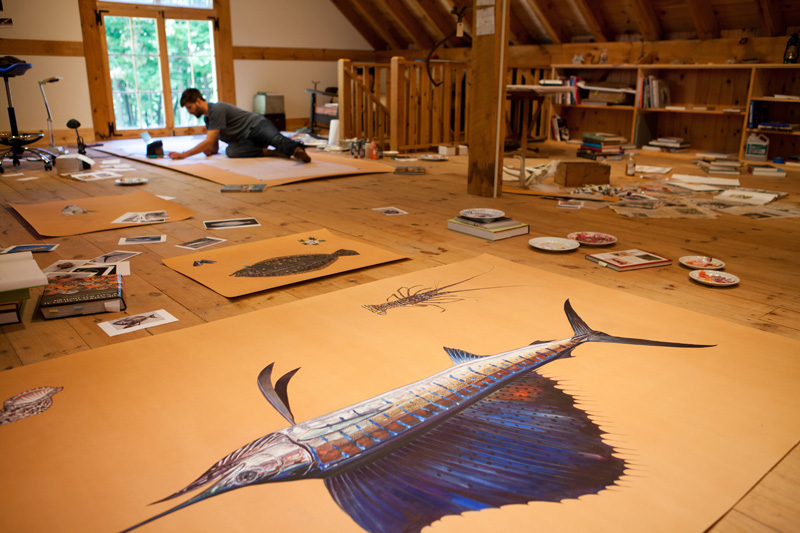 Photo credit: Mountain Film
Photo credit: Mountain Film
Prosek has also written for National Geographic, including an article about the Sargasso Sea - which includes incredibly imagery showcasing some of the small animals that can be found in association with the seaweed there.
The European Eel - a poem
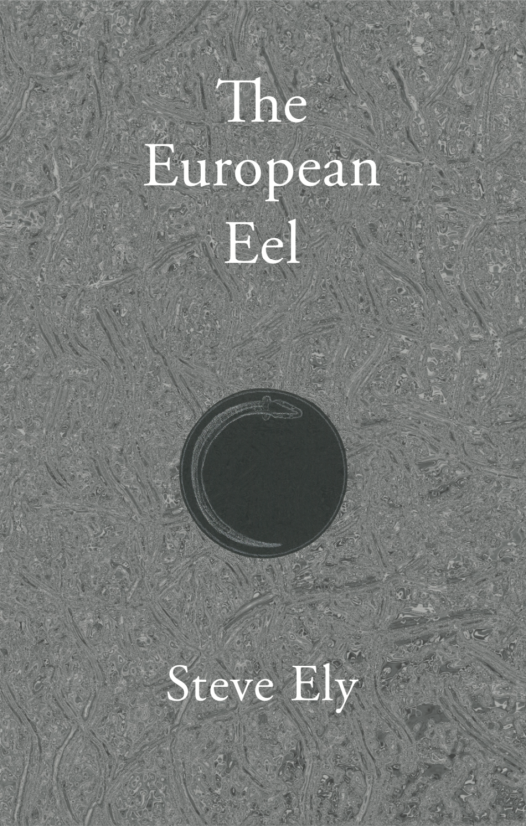 Steve Ely is the author of this book-length poem, which focuses on the life cycle, natural history, and conservation of the European eel. Based on Ely's in-depth engagement with the scientific literature, discussions with leading eel researchers and conservationists, and hands-on experience with the eel in river systems across the country and abroad, The European Eel is unique not only in its sustained birth-to-death focus on the eel, but in the vivid way the eel's riverine and marine habitats are evoked and articulated—and in its portrayal of the daunting array of anthropogenic threats that are currently threatening this once common species with extinction.
Steve Ely is the author of this book-length poem, which focuses on the life cycle, natural history, and conservation of the European eel. Based on Ely's in-depth engagement with the scientific literature, discussions with leading eel researchers and conservationists, and hands-on experience with the eel in river systems across the country and abroad, The European Eel is unique not only in its sustained birth-to-death focus on the eel, but in the vivid way the eel's riverine and marine habitats are evoked and articulated—and in its portrayal of the daunting array of anthropogenic threats that are currently threatening this once common species with extinction.
Although a poem first and foremost—an Expressionistic epic monology that transforms its natural history into a quasi-gnostic affirmation of the persistence of life in the context of the Anthropocene and the Sixth Extinction—the poem's rootedness in research also enables it to function as a credible piece of informed nature writing capable of shaping ecological debate.
Please find below a short presentation by Steve Ely, as well as readings from the poem. This recording was taken at the book's launch event, hosted by Longbarrow Press.
Sea Life in the North Atlantic - Edward Roper
The Sargasso Sea is able to display this 1873 painting depicting many organisms found within the Sargass Sea with the kind permission of the Maas Gallery - please click here for more information on the painting.
Chris Duperreault - Bermuda Gyotaku
Chris Duperreault produces original prints of fish from the Sargasso Sea. Using the traditional Japanese art of fish rubbing, he preserves these giants - showcasing their true shape, size, and beauty forever while still being able to eat them after the process. Learn more about his work at his website, here.
The Herring Man - Cyril James Morris
The Herring Man is a story of hope, dealing with grief and the importance of memory intertwined with the human connection to the ocean and the need for its conservation.
This short book has been beautifully illustrated by the author, and includes several references to the Sargasso Sea!
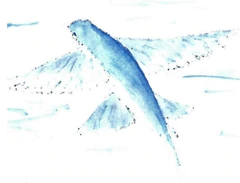
And so he started, found his voice and softly told the room the very first tale he'd heard from his grandfather. The one about crossing one of the Seven Seas, the North Atlantic, through that magical place the Sargasso Sea where strange creatures never seen anywhere before crawled on floating seaweed. He said their black eyes blinked as they waved their antennae and claws at him as he sat at the tiller and slowly sailed past great rafts of coloured seaweeds in reds, yellows, greens, blues, pinks and browns. Like a miniature forest in autumn was how he'd described it. He'd had that way of saying things that conjured up the images so that they were easily re-membered. Could he do that?

Read more about the book on the Parthian site, and read more about its connection to the Sargasso Sea here!

